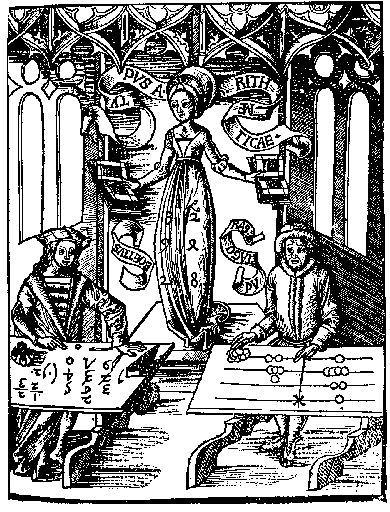
The new versus the old method of computation as portrayed in an early
encyclopaedia, the MARGARITA PHILOSOPHICA of Gregor Reisch (Strassbourg,
1504).
The
illustration symbolizes the culmination of a four-hundred year rivalry.
The abacists had fought to retain Roman numerals and the abacus for calculation.
The algorists advocated the use of the Hindu-Arabic system, along with
its algorithms for calculation, the methods having been popularized in
Europe via a 12th century translation of the great arithmetic textbook
of al-Khwârizmî
.
The
central figure in the woodcut, holding books on the two methods of calculation,
is Arithmetica, representing one of the seven "liberal arts"
comprising the university curriculum of the time. The abacists are represented
by the Greek mathematician Pythagoras, who is calculating on a counting-board,
whereupon pebbles are pushed along lines (the Latin word for pebble is
calculus). The algorists are represented by the Roman philosopher and
arithmetician Boethius, who is employing algorithmic methods to compute
with Arabic numerals.
By the early 16th century, Western Europe had universally adopted the efficient algorithms.